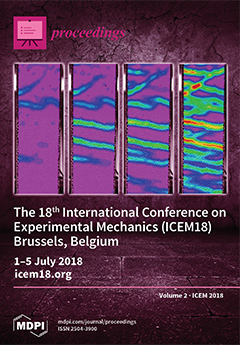Proceedings, 2018, ICEM 2018
The 18th International Conference on Experimental Mechanics (ICEM 2018)
Brussels, Belgium | 1–5 July 2018
Issue Editors:
Danny Van Hemelrijck, Vrije Universiteit Brussel, Belgium
Dimitrios Aggelis, Vrije Universiteit Brussel, Belgium
Nele De Belie, Ghent University, Belgium
Fabienne Delaunois, Université de Mons, Belgium
Thomas Geernaerts, Vrije Universiteit Brussel, Belgium
Patrick Guillaume, Los Alamos National Laboratory, USA
Anne Marie Habraken, University of Liège, Belgium
Patrick Hendrick, San Simon University, Bolivia
Edwin Reynders, KU Leuven, Belgium
Aude Simar, Université catholique de Louvain, Belgium
Steve Vanlanduit, University of Antwerp, Belgium
- Issues are regarded as officially published after their release is announced to the table of contents alert mailing list.
- You may sign up for e-mail alerts to receive table of contents of newly released issues.
- PDF is the official format for papers published in both, html and pdf forms. To view the papers in pdf format, click on the "PDF Full-text" link, and use the free Adobe Reader to open them.



